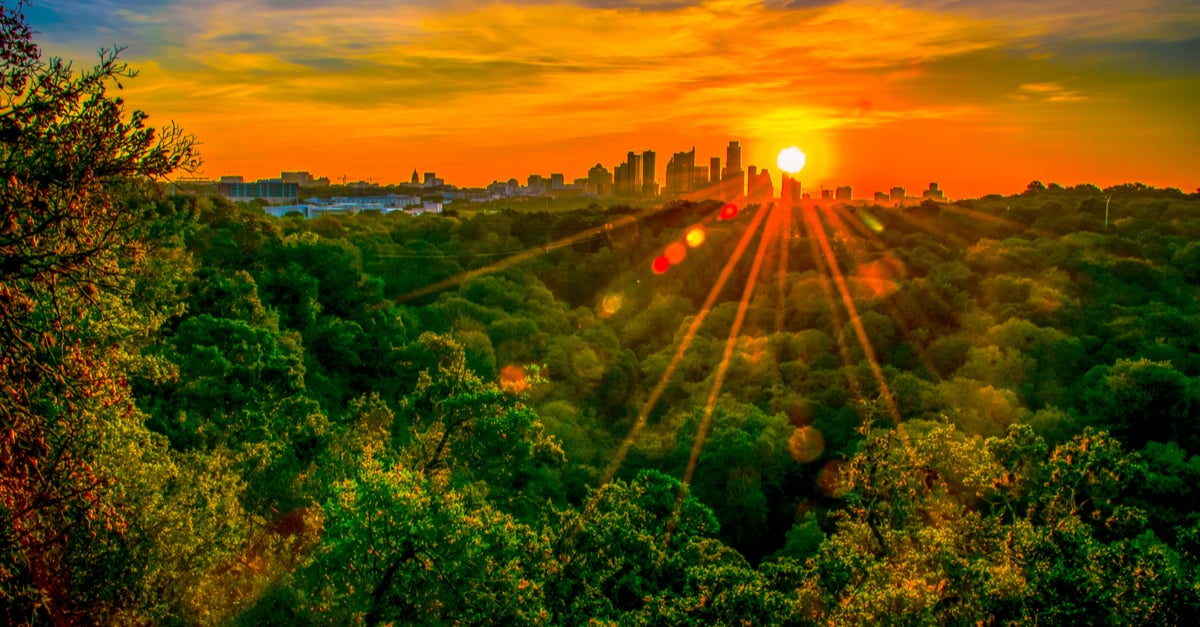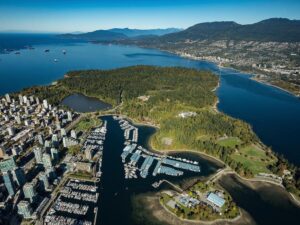
10 Ways Cities Can Create Sustainable Green Spaces
by Jane Marsh
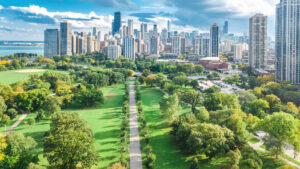
The world is becoming increasingly aware of the problem of deforestation, but what about green spaces in cities?
The creation of green spaces such as forests and parks to pave the way for agriculture and sustainable space is one of the biggest environmental challenges facing the 21st century.
Thankfully, new farming techniques and restorative practices are bringing green back to the planet (thanks to sustainable agriculture and reforestation). But what about the places where green spaces are more sparse, such as city environments?
Although it might seem challenging, many ways exist to bring the benefits of green spaces to highly-populated urban areas.
Create a Public Park
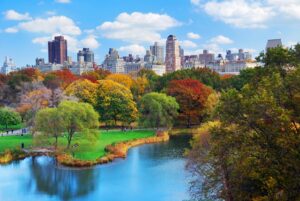
Parks are a staple of cities for a reason. They’re an ample green space that provides people with a sense of peace and community.
Studies show green environments have a positive effect on mental health. Urban areas with limited natural structures or fauna can be mentally exhausting for city dwellers.
In contrast, the data shows natural green spaces calm the mind and promote positive mental health.
Great examples of public parks are Hyde Park, London, Stanley Park, Vancouver, Central Park, New York City, and Lincoln Park, Chicago.
Besides London, Vancouver, NYC, and Chicago, Green City Times details parks in many cities that are featured on pages throughout this site.
Make a Mini-Forest
Creating a mini-forest is a much larger project in which an entire community can participate. Mini-forests are precisely what they sound like — ample space with trees and vegetation. While creating one takes a lot of work and time, there are a good number of benefits to having a large green area.
Creating a mini forest can be a long-term goal that brings the city’s people together. Once completed, everyone can reap the benefits — including the next generation of the city’s population.
Create City Gardens
 The most apparent way cities can bring some green to their neighborhood is to start making gardens a regular sight.
The most apparent way cities can bring some green to their neighborhood is to start making gardens a regular sight.
As long as space and soil are available, creating a garden can add some green to urban areas.
Gardens don’t have to be on the ground, either. Any space to put down some plants — like a patio or rooftop — can be perfect for a mini garden.
Most plants are hardy and can survive if they get enough sunlight and water.
Grow a Green Building
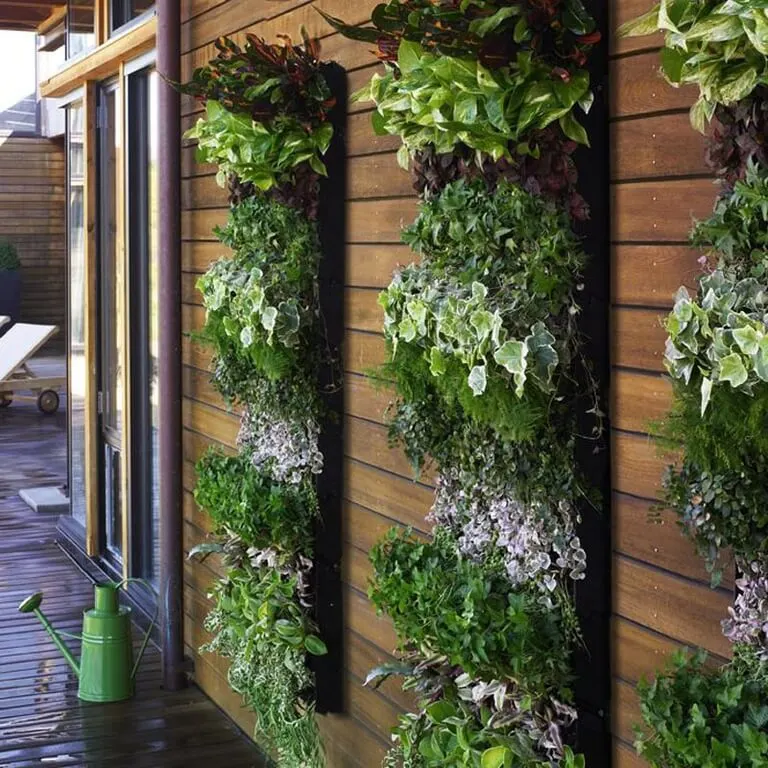 A simple but effective way to bring out some green in the city is to find places to create gardens on buildings. Rooftop gardens or small spaces near windowsills and balconies are a great way to bring some green to your apartment building.
A simple but effective way to bring out some green in the city is to find places to create gardens on buildings. Rooftop gardens or small spaces near windowsills and balconies are a great way to bring some green to your apartment building.
Garden walls — also known as vertical gardens — are one of the best ways to create a big garden using a small amount of space.
Unlike traditional gardens, vertical gardens are built in columns instead of rows. This method minimizes the amount of space you need.
There are many ways to create vertical gardens using recycled or pre-made materials.
Plant a Flower Garden
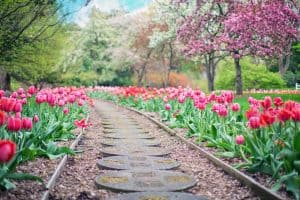 Of course, green spaces don’t mean just green. Dotting the cityscape with flower gardens can bring some life and color to the gray of the urban landscape. Like gardening, there are plenty of ways to use the space available to make a flower garden.
Of course, green spaces don’t mean just green. Dotting the cityscape with flower gardens can bring some life and color to the gray of the urban landscape. Like gardening, there are plenty of ways to use the space available to make a flower garden.
Some of the best places to plant flowers are curbs, storefronts, and front doors. While flowers might be more sensitive than garden plants, having such magnificent colors around is excellent for the city’s look and citizens’ morale.
Plant Wherever You Can
Adding green to urban environments can be done in more than big spaces. Planting trees, flowers, and other plants, wherever space is available, can give the city a more green look and feel. Even adding plants inside buildings can create a green space where people feel relaxed and welcome.
Start an Urban Food Garden
 One of the sad realities of urban environments is although there’s so much food and resources available, not everyone can afford them. One small way to help solve this problem is by creating a public urban farm.
One of the sad realities of urban environments is although there’s so much food and resources available, not everyone can afford them. One small way to help solve this problem is by creating a public urban farm.
Planting leafy vegetables, carrots, tomatoes, and potatoes is a great way to bring life to struggling communities.
Urban areas can have these small farms in specialized areas to unite neighborhoods. People can even try planting their produce in empty plots.
Create an “Awareness” Day
An excellent way to encourage the creation of green spaces and bring communities together is to create a “green” awareness campaign. Making an event based on being environmentally friendly will allow people to learn about sustainability and plant their own gardens.
For example, San Francisco founded Park(ing) Day. Every September 15, people across the U.S. are encouraged to repurpose parking spaces temporarily into miniature public parks. This is to spread awareness of the importance of green spaces in urban environments.
Invest in Hydroponic Farms
 Hydroponics is a new technology that allows cities to grow almost the same amount of plants and vegetables as a fully functioning farm. These hydroponic farms use a complex water delivery system to grow plants using little or no soil.
Hydroponics is a new technology that allows cities to grow almost the same amount of plants and vegetables as a fully functioning farm. These hydroponic farms use a complex water delivery system to grow plants using little or no soil.
One of the most significant advantages of this technology is it can be built indoors using almost any space. Instead of tearing down buildings no longer in use, they can be retrofitted to become hydroponic farms.
Instead of shipping in products from farms several miles away, hydroponic farms can grow that food in the middle of the city. While not a “green space” in the traditional sense, hydroponic farms can bring a lot of green to supermarkets and grocery stores while using water efficiently.
Invest in Algae-Powered Solutions
Like hydroponic farms, algae-building technology might not be outwardly green, but it creates a sustainable environment using green-powered technology. Also known as bioreactors, algae-powered buildings are developing technology that uses the biological functions of algae in various ways.
These include using the process of photosynthesis to capture CO2 in the atmosphere and release it as oxygen, reducing the amount of carbon emissions in the air. In addition, dead algae can be burned as a power source rather than relying wholly on energy from fossil fuels.
Green Spaces Are Important for City Living
While it might take some additional planning and resources, the benefits of green spaces are enormous for big cities. Not only do they improve the mental health of its citizens, but they also help reduce harmful emissions that could adversely affect human health.
Article by Jane Marsh
Jane works as an environmental and energy writer. She is also the founder and editor-in-chief of
